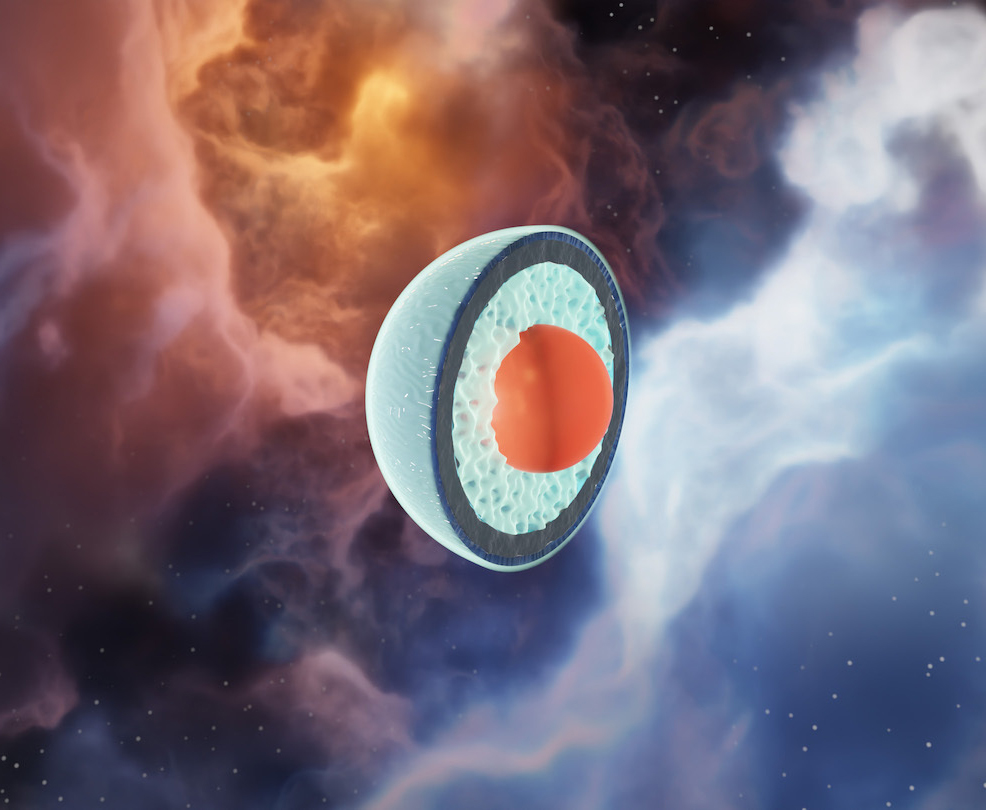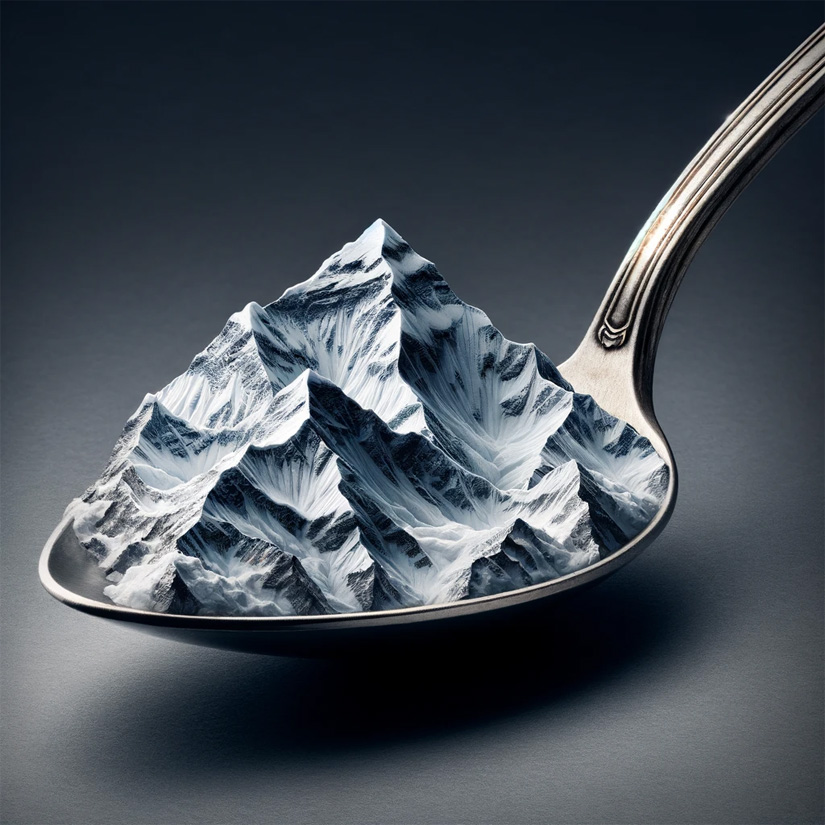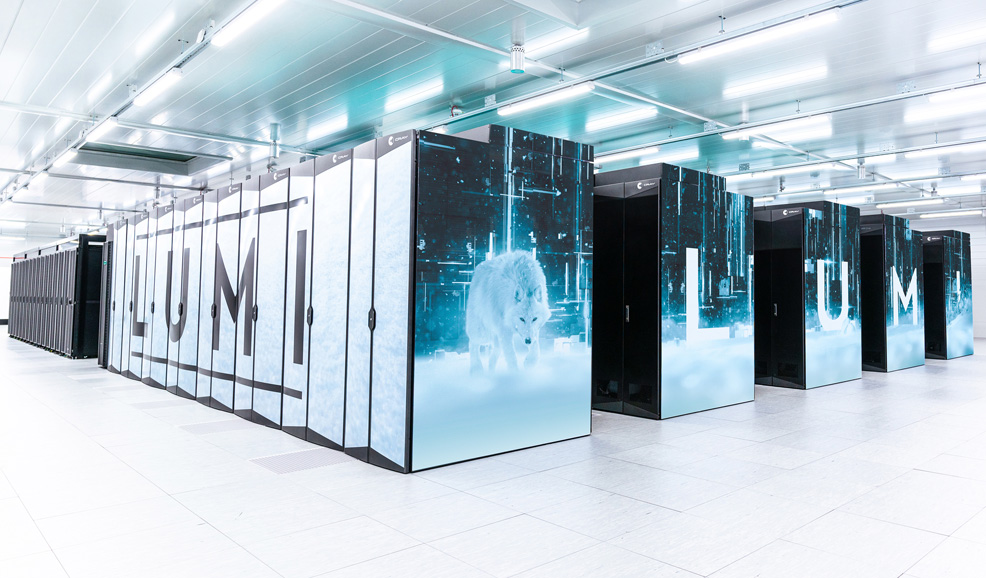
3rd January 2024 Neutron star cores revealed by supercomputer One of the world's most powerful supercomputers has produced a simulation of the largest and densest neutron stars. This new model shows there is a nearly 90% chance that they contain quark-matter cores.
Neutron stars are some of the most fascinating objects in the universe. These dense remnants of collapsed stars pack a mass greater than that of our Sun into a sphere just 20 km (12.4 mi) in diameter. To put that another way: imagine squeezing a large star, between 1.5 and three times the size of our own, into an area smaller than New York City. This results in some of the densest matter in the known universe – 10 billion times harder to break than steel – producing conditions so extreme that they defy our everyday understanding of physics. Quarks are the fundamental building blocks of protons and neutrons, which in turn make up the nuclei of atoms. In normal conditions, quarks are bound tightly together within these particles. This binding is due to something called the strong force, one of the fundamental forces of our universe (the others being gravity, electromagnetism, and the weak force). Essentially, it acts like a super-strong "glue" holding the quarks together. In the ultra-dense core of a neutron star, however, conditions are so extreme that a change in this state of matter is hypothesised to occur. The density and pressure are so high that they overcome the strong force keeping the quarks confined within protons and neutrons. As a result, the quarks are no longer bound within these particles but are squeezed out, making them free to move around. This creates what is known as quark matter or a quark-gluon plasma. A similar state of matter is believed to have existed in the very earliest moments of the universe, just a fraction of a second after the Big Bang, before quarks and gluons combined to form the first protons and neutrons. The matter is so dense, in fact, that a teaspoonful of neutron star would weigh as much as Mount Everest.
Until now, however, the exotic state of matter in neutron star cores had been largely speculative. Significant uncertainties had remained over whether the immense central pressure could actually compress protons and neutrons so much that they would no longer exist as individual particles. 88% certainty A team at the University of Helsinki has now confirmed with 88% certainty that neutron star cores do produce a quark-gluon plasma. This conclusion is based on results from a detailed simulation conducted at Finland's IT Center for Science, which houses LUMI. First installed in 2021, and upgraded in 2023, LUMI is the most powerful supercomputer in Europe and currently ranked at number five in the Top 500 global list, with up to 379 petaFLOPS of sustained performance and 0.53 exaFLOPS of peak performance (530,000,000,000,000,000 floating-point operations per second). Powered by 100% hydroelectric energy – and with its heat being captured and used to warm buildings in the local area – it also ranks as one of the most environmentally efficient supercomputers in the world.
A paper on this study appeared recently in the journal Nature: "We quantify this likelihood by combining information from astrophysical observations and theoretical calculations," the authors write. "Using Bayesian inference, we demonstrate that in the cores of maximally massive stars, the equation of state (EoS) is consistent with quark matter." The few remaining uncertainties in the team's simulation are now related to the phase transition between nuclear and quark matter, somewhat resembling that of liquid water turning to ice. A rapid change in the properties of neutron star matter has the potential to destabilise the star, in such a way that the formation of even a minuscule quark-matter core would result in the star collapsing into a black hole. In their paper, the team shows how this will be either fully confirmed or definitively ruled out by future work that constrains the strength of the phase transition. Improved data should be available with gravitational wave signals from the final stage of binary neutron star mergers. Various new telescopes are planned in the next decade that will record these signals in much greater quantities and at much higher sensitivities, alongside which the supercomputers of that time will be even faster than today. In the meantime, the evidence strongly suggests that quark-gluon plasma exists in neutron star cores – and the ability to accurately model these environments keeps increasing over time, as one of the paper's lead authors, Dr. Joonas Nättilä, explains: "It is fascinating to concretely see how each new neutron star observation enables us to deduce the properties of neutron star matter with increasing precision." "We had to use millions of CPU hours of supercomputer time to be able to compare our theoretical predictions to observations and to constrain the likelihood of quark-matter cores," explained Joonas Hirvonen, PhD student and co-author. "We are extremely grateful to the Finnish supercomputer centre CSC for providing us with all the resources we needed!"
Comments »
If you enjoyed this article, please consider sharing it:
|









